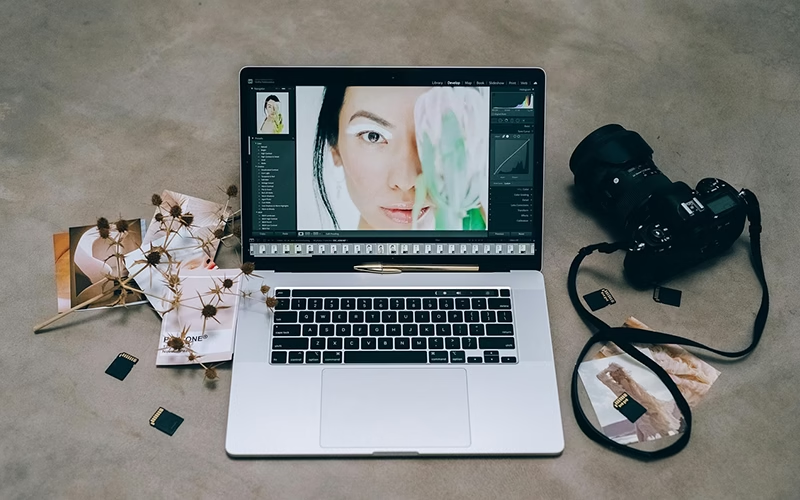Have you ever wondered why some photographs immediately capture your attention while others go unnoticed? The answer often lies in the use of color. Mastering color theory not only elevates your images to another level, but also allows you to communicate exactly what you want with each shot.
Consciously choosing how you use color in your photographs can completely transform your work. Whether you’re looking to convey warmth, drama, serenity, or energy, understanding how colors work will give you the creative control you need to express your unique vision.
In this guide, I will take you by the hand through the fascinating world of Mastering color theory in photography.
Important Aspects to Consider
The Color Wheel
The color wheel is your fundamental ally for understanding the relationships between colors. Knowing it will allow you to create harmonious combinations or striking contrasts that bring your photographs to life. Complementary colors (opposites on the wheel) create visual tension, while analogous ones (adjacent) generate a sense of harmony.
Color temperature
Warm tones (reds, oranges, yellows) convey energy, passion, and closeness. Cool tones (blues, greens, violets) evoke tranquility, distance, and mystery. Playing with color temperature helps you set the emotional tone of your image from the first glance.
Color Psychology
Each color evokes specific emotions in the viewer. Red generates passion and urgency; blue, trust and calm; green, nature and renewal. Knowing these effects allows you to deliberately manipulate the emotional response you wish to provoke.
Saturation and Tone
The intensity of colors (saturation) and their specific nuances (tone) define the character of your photograph. High saturation communicates vitality and optimism, while desaturated colors can convey nostalgia or sophistication.
Chromatic Composition
Chromatic composition it’s not just about which colors you use, or how you organize them within the frame. The distribution of dominant colors, accents, and neutrals determines where the viewer’s eye goes and how it flows through the image.
The 3 Best Tools to Master Color in Photography
1. Adobe Lightroom Classic
Highlighted features:
- HSL (Hue, Saturation, Luminance) adjustment system that allows modification of specific colors
- Customizable color profiles
- Advanced color curves for precise adjustments
- Device synchronization
Advantages: Intuitive interface, powerful color management tools, constant updates, large user community.
Disadvantages: Monthly subscription model, steep learning curve for advanced functions.
Approximate price: $9.99/month (Photography Plan)
2. Capture One Pro
Highlighted features:
- Adjustment layers for zonal color editing
- Advanced color editor with chromatic wheel
- Camera-specific color profiles
- Exceptional color balance tools
Advantages: Superior color reproduction, session-based organization ideal for professionals, customizable interface.
Disadvantages: High price, fewer available tutorials than competitors.
Approximate price: $299 (perpetual license) or $24/month (subscription)
3. ON1 Photo RAW
Highlighted features:
- Creative color effect filters
- Local color adjustments via masks
- Customizable color presets
- No subscription required
Advantages: One-time payment, combination of management and editing in a single software, frequent updates, excellent quality-price ratio.
Disadvantages: Slower performance on older machines, less accurate in color calibration than premium options.
Approximate price: $99.99 (perpetual license)
Conclusion
Mastering color theory in photography is an ongoing journey that will significantly transform the quality and emotional impact of your images. Remember that the ideal tool depends on your specific needs, photographic style, and available budget.
If you’re looking for comprehensive software with constant updates and are willing to invest monthly, Adobe Lightroom is your best ally. For those who value maximum precision in color reproduction and work professionally, Capture One Pro more than justifies its investment. And if you prefer an effective solution without monthly commitments, ON1 Photo RAW offers an excellent balance between functionality and cost.
The most important thing is that, regardless of the tool you choose, you consciously apply the fundamental concepts: the color wheel, color temperature, chromatic psychology, handling of saturation, and chromatic composition. With constant practice and experimentation, you will develop your own visual language where color will not be an accident, but a powerful narrative element under your control.
My final advice? Start with Adobe Lightroom if you’re a beginner or enthusiastic photographer, as it offers the best balance between ease of use and power. If you already work professionally and color accuracy is crucial to your work, Capture One Pro will be your best investment. And don’t forget the most important thing: the best tool is the one that allows you to express your creative vision without becoming an obstacle.

